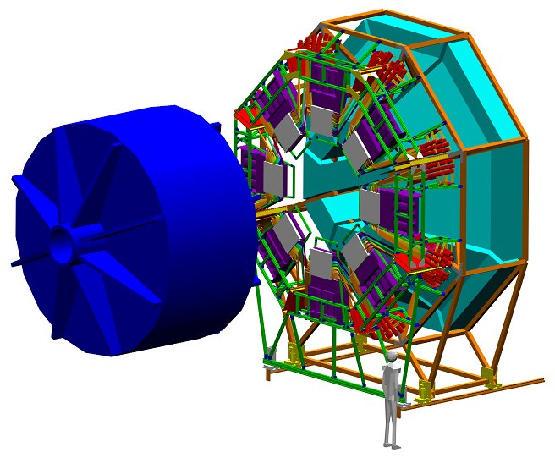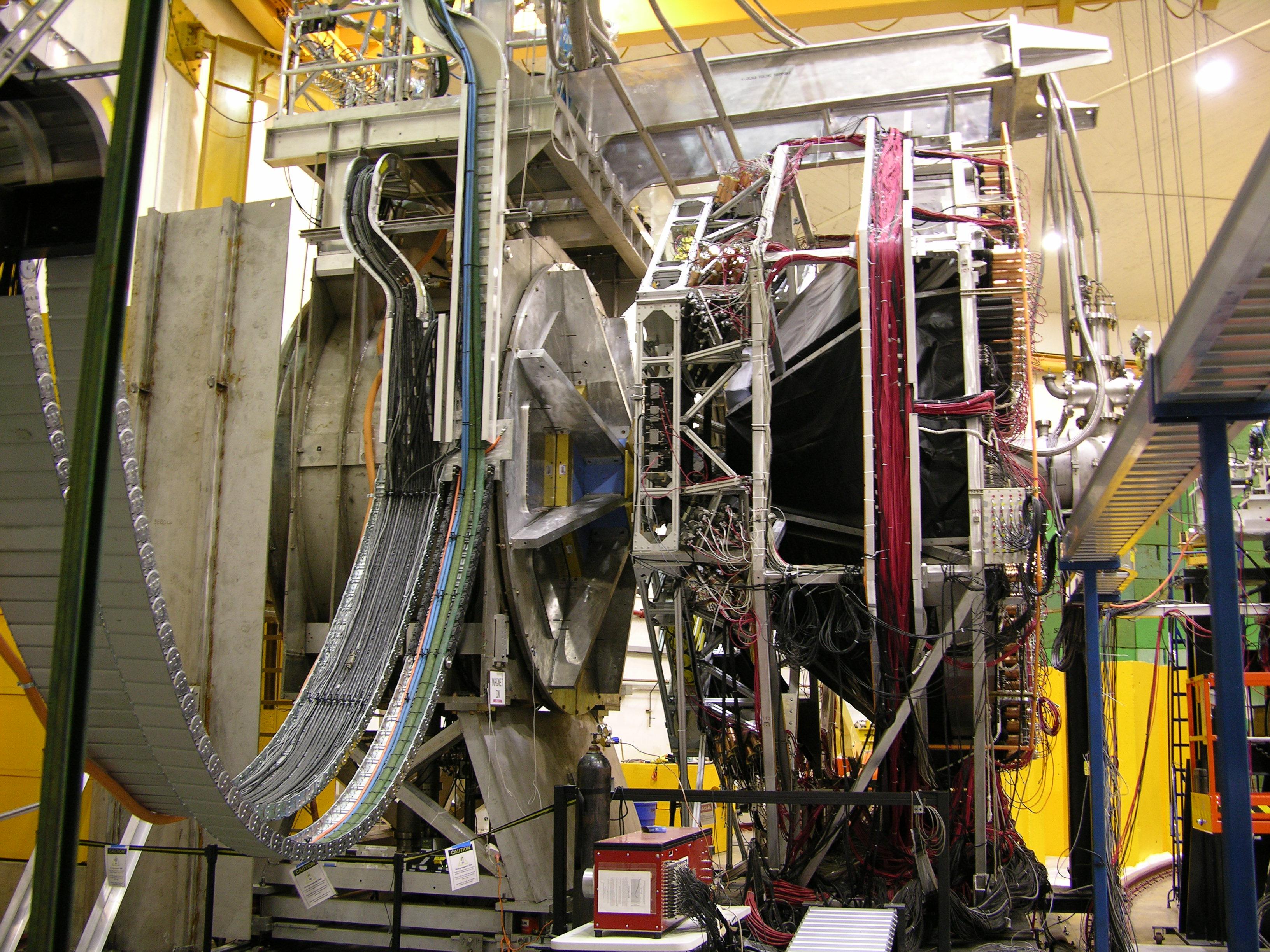Although very little is known about the role played by strange quarks in the proton and neutron, tantalizing evidence from a number of experiments indicate that they may be important. By exploiting a set of unique "parity-violation" measurements, the G-Zero experiment is able to study the contributions from strange quarks to the basic properties of the proton, such as its magnetic moment and electric charge distribution.
The full experiment took more than 15 years to accomplish, with tons of new equipment and exclusive use of one third of the experimental space for over two years at the U.S. Thomas Jefferson National Accelerator Facility in Newport News, Virginia. In addition, it benefitted from the assistance of nearly 50 undergraduates, graduate students and postdoctoral researchers and hundreds of support personnel. Now, the G-Zero experiment is publishing the first of several of papers detailing its final conclusions. Its findings have been printed in the January 8 issue of Physical Review Letters.
Utilizing an alternating right-handed and left-handed polarized electron beam (that is, the electron is "spinning" in either a right-handed or left-handed sense) and colliding it on a stationary proton target at Jefferson Lab, the G-Zero experimenters make use of a very large superconducting magnet and a state-of-the-art detector system to measure the recoil protons or the scattered electrons. Scattering "Asymmetries", or differences in the scattering reaction rates between the right-handed and left-handed polarized electron beam, are observed when "Parity" (or mirror-reflection symmetry) is violated. These scattering asymmetries are sensitive to strange-quark effects. The experiment is very challenging due the small sizes of the typical asymmetries (about 5 parts per million, or 0.000005) and the high statistical precision [(+/-)5% or (+/-)0.00000025] required to achieve adequate sensitivity to the strange quark effects.
Led by Willem van Oers at the University of Manitoba, Canadian scientists based at TRIUMF, and the Universities of Manitoba, Northern British Columbia and Winnipeg have played an important role in the G-Zero experiment. A graduate student from the University of Manitoba is presently completing his Ph.D. dissertation based on data from the G-Zero second phase ("Backward Angle"). The role of TRIUMF has been especially important. Not only was the intellectual input of the TRIUMF Detector Facility needed to design and produce the specialized "high-rates" phototube-base electronics used in all of the scintillation detectors, but TRIUMF's Scintillator and Machine shops were crucial in enabling the second phase of the experiment to proceed (75% of the detectors, as well as the support structure, required for the second phase of the experiment were designed and fabricated thru TRIUMF infrastructure support).
In order for the G0 experiment to succeed, the magnetic field produced by the superconducting spectrometer must be very precisely known. This is particularly challenging since the coils of the magnet must be kept at very low temperature inside a large vacuum vessel. Canadian scientists and engineers worked out a technique for mapping the magnetic field and built a precise, remote controlled field mapping device, which they used to deduce the full magnetic field distribution, including the locations and alignments of all coils inside the vacuum vessel, to high precision.
An itemized list of the G-Zero subsystems which were designed and built at TRIUMF is listed below with generous support ($1.68 million) from the Government of Canada via NSERC and NRC.
- "High-rates" phototube bases (300) for the Focal-Plane Scintillation detectors
- All (72) of the Cryostat-Exit Scintillation detectors
- Half (4) of the Aerogel-Cerenkov detectors
- The "Mini-Ferris wheel" support structure for the detectors
- An automated large-volume field mapping device
- Customized "parity" Voltage-to-Frequency electronic modules
 |
|
| A conceptual view of the G-Zero experimental apparatus. | A sideview of the G-Zero experiment. |
-- By Larry Lee and Shelley Page, TRIUMF and University of Manitoba

